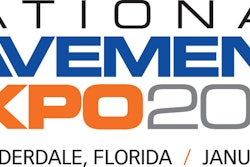A few years ago, the National Institutes of Health (NIH) funded a study of distortions in scientific publications about obesity. The study concluded that the distortions reflected a phenomenon they dubbed “White Hat Bias.”
White Hat Bias was recognized as a set of preferences that lead to non-neutral decisions and actions by scientists resulting in “distortion of information in the service of what may be perceived to be righteous ends.” In other words, intentionally or unintentionally, motivated by “feelings of righteous zeal, indignation toward certain aspects of industry or other factors” scientists put their thumb on the side of the scale they believe to be more righteous. They seem to believe they are promoting some higher truth, and so they swap the hat of a neutral scientist reporting the facts for the hat of an advocate, skewing science to support a favored position.
PavementCouncil.org believes White Hat Bias is a good description of the mistaken information about refined tar-based sealcoat put out by US Geological Survey (USGS) scientists over the past few years.
By now, you might have heard about the Data Quality Act (DQA) challenges to the USGS filed by PavementCouncil.org. The challenges – formally called “Requests for Correction” – provide a vehicle for detailed evaluations of USGS science, including the inaccuracies, exaggerations, misleading statements, unexplained omissions of data and absence of context in USGS publications about RTS. In the process, the four categories of White Hat Bias are also being documented.
The four categories are
- Citation bias, which is the tendency to refer to other research results in a way that exaggerates or misrepresent the support other scientists work supports your conclusions,
- Publication bias, which is the preference for publishing scientific articles that draw attention from the press and others, while not publishing accurate but not attention-getting science studies,
- Miscommunication in press releases and
- Questionable inclusion of information that is irrelevant to the study at hand.
The first challenge documents that USGS claims that RTS is a significant source of PAHs in urban sediment are inaccurate. The second asks that the USGS stop using photographs of catfish with horrific skin tumors in its advocacy materials because the way the USGS uses the photographs gives the inaccurate message that the tumors are somehow related to RTS. The third challenge is a review of the risk assessment published by the USGS research team earlier this year. The risk assessment is so flawed that, without White Hat Bias, it seems doubtful it could have been published at all.
All three DQA challenges submitted so far are available at PavementCouncil.org. Also available is an evaluation of the methodology used by the USGS in its volatilization studies. PavementCouncil.org plans to submit several additional DQA challenges, including on focused on volatilization.




















